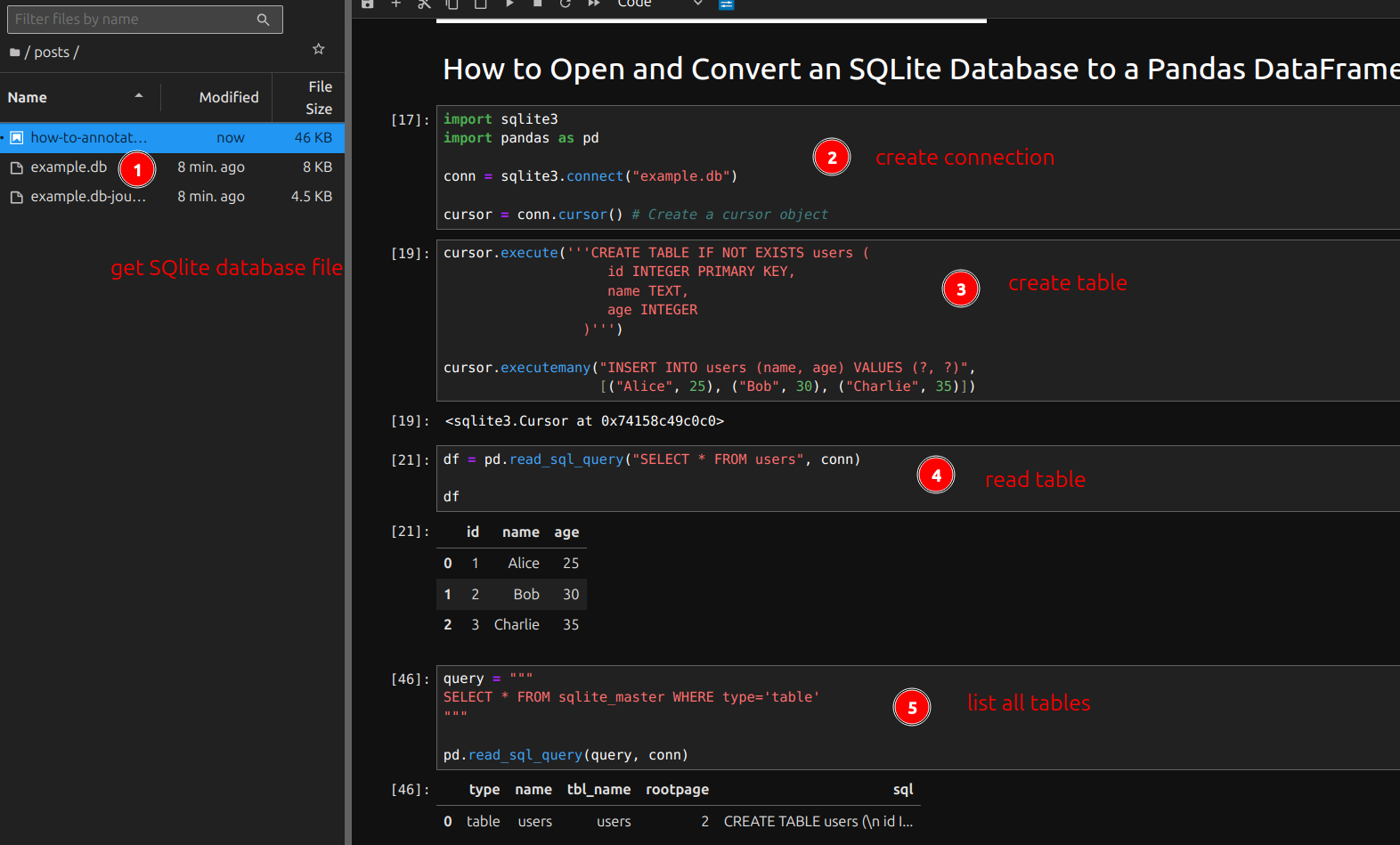In this article, we’ll explore how to open an SQLite database and convert its tables into Pandas DataFrames with two practical examples.
TL;DR
To open and convert an SQLite database file like data.bg to a Pandas DataFrame we can use:
import sqlite3
import pandas as pd
# Connect to SQLite database (or create if it doesn’t exist)
conn = sqlite3.connect("example.db")
# Create a cursor object
cursor = conn.cursor()
Install pysqlite3 package
You may need to install the pysqlite3 python package by:
pip install pysqlite3
When working with SQLite databases in Python, it’s common to extract data and analyze it using Pandas.
Example 1: Reading an Entire Table into a DataFrame
Step 1: Connecting to the SQLite Database
First, we need to establish a connection using the sqlite3 module in Python.
import sqlite3
import pandas as pd
conn = sqlite3.connect("example.db")
cursor = conn.cursor() # Create a cursor object
where file "example.db" is exported from SQlite database.
Step 2: Creating a Sample Table (Optional)
To create a sample table and insert some records.
cursor.execute('''CREATE TABLE IF NOT EXISTS users (
id INTEGER PRIMARY KEY,
name TEXT,
age INTEGER
)''')
cursor.executemany("INSERT INTO users (name, age) VALUES (?, ?)",
[("Alice", 25), ("Bob", 30), ("Charlie", 35)])
conn.commit()
Step 3: Loading the Table into a DataFrame
Now, we can load the entire users table into a Pandas DataFrame using pd.read_sql_query().
# Read entire table into a Pandas DataFrame
df = pd.read_sql_query("SELECT * FROM users", conn)
df
the result will be:
| id | name | age | |
|---|---|---|---|
| 0 | 1 | Alice | 25 |
| 1 | 2 | Bob | 30 |
| 2 | 3 | Charlie | 35 |
Close the connection
At the end we should close the sqlite3 connection afterwards with:
cnx.commit()
cnx.close()

Example 2: Running Custom Queries and Filtering Data
Instead of loading an entire table, we can use SQL queries to retrieve only specific records.
Step 1: Fetching Filtered Data
Let’s retrieve users who are older than 25 years.
df_filtered = pd.read_sql_query("SELECT * FROM users WHERE age > 25", conn)
df_filtered
result:
| id | name | age | |
|---|---|---|---|
| 0 | 2 | Bob | 30 |
| 1 | 3 | Charlie | 35 |
Step 2: List all SQlite tables
To list all SQlite tables with Python we can run:
query = """
SELECT name FROM sqlite_schema
WHERE type IN ('table','view')
AND name NOT LIKE 'sqlite_%'
ORDER BY 1;
"""
pd.read_sql_query(query, conn)
getting only the table name:
`users`
Alternatively we can get additional table info by:
query = """
SELECT * FROM sqlite_master WHERE type='table'
"""
pd.read_sql_query(query, conn)
| type | name | tbl_name | rootpage | sql | |
|---|---|---|---|---|---|
| 0 | table | users | users | 2 | CREATE TABLE users ( |
| id INTEGER PRIMARY KEY, | |||||
| name TEXT, | |||||
| age INTEGER | |||||
| ) |
Conclusion
Reading and converting an SQLite database to a Pandas DataFrame is a simple process using sqlite3 and pd.read_sql_query(). In this guide, we explored:
Example 1: Loading an entire table into Pandas
Example 2: Running custom queries to fetch filtered data









